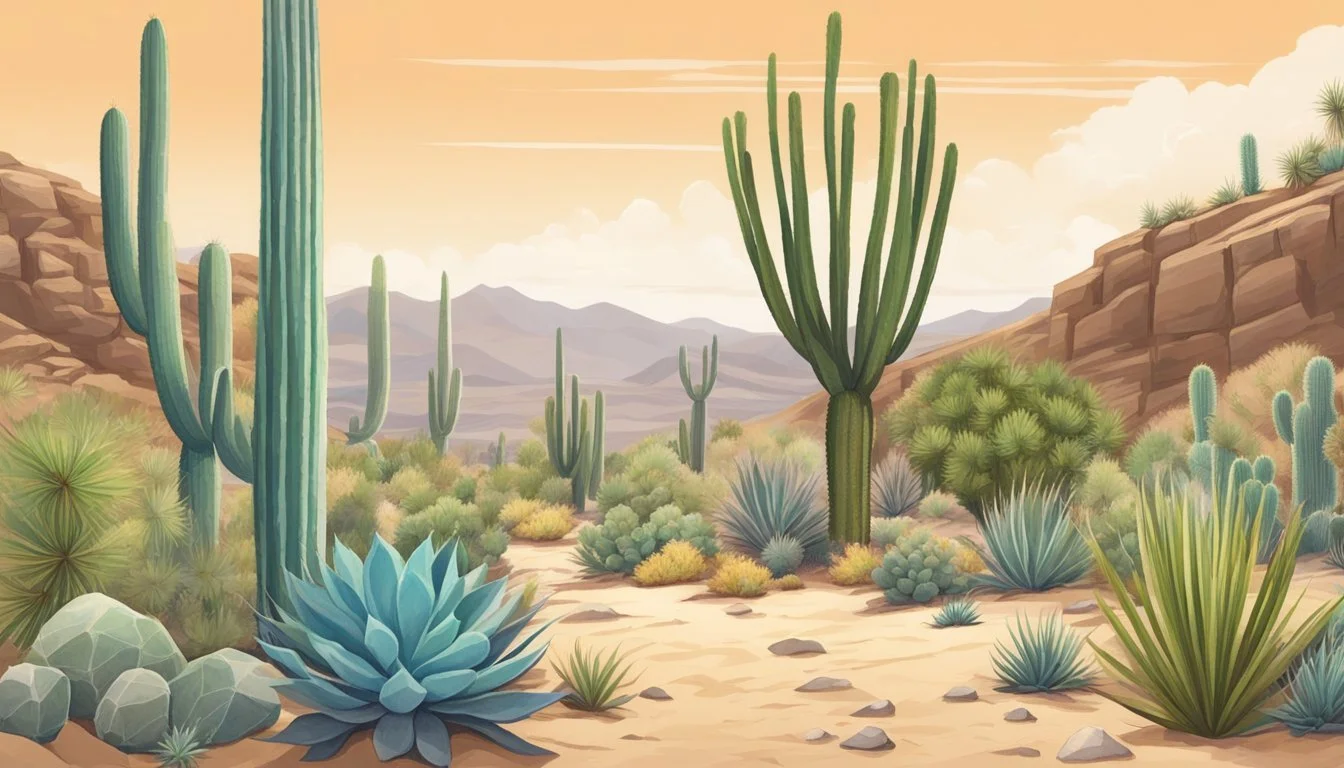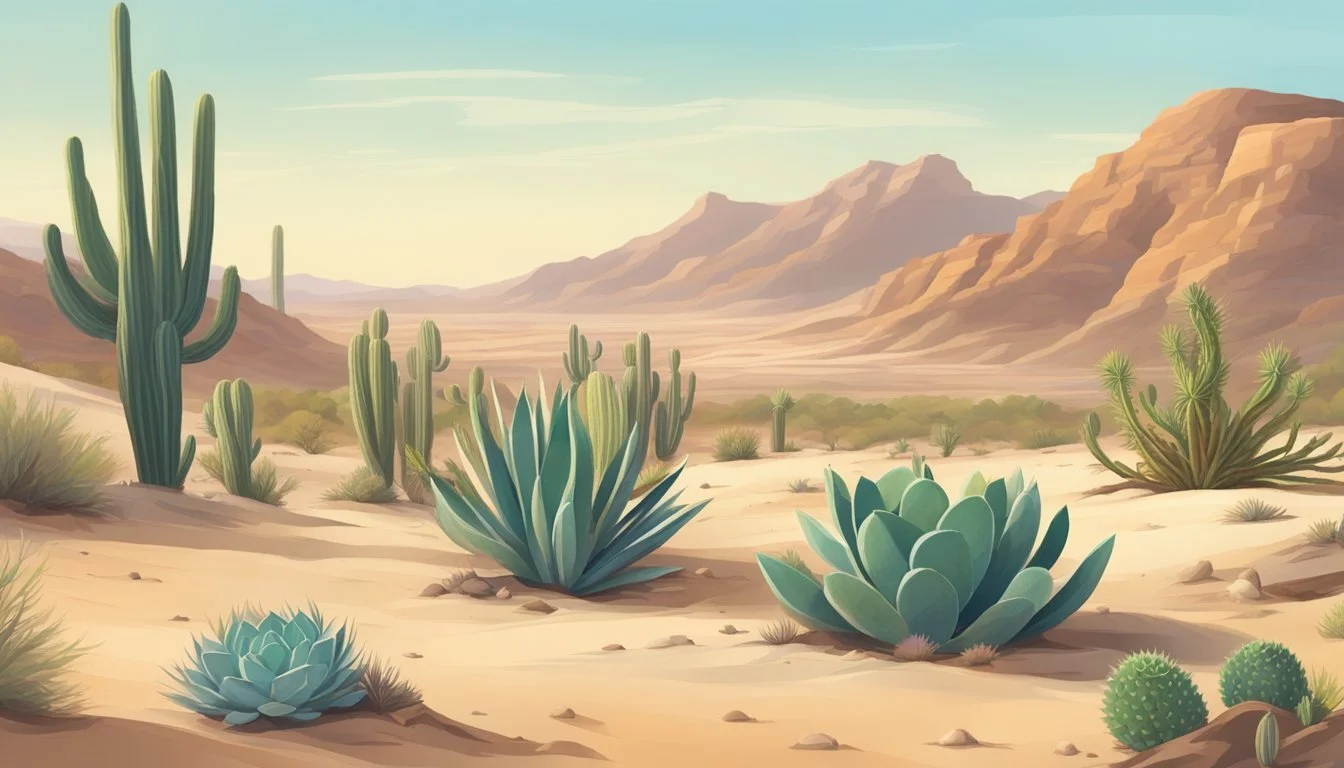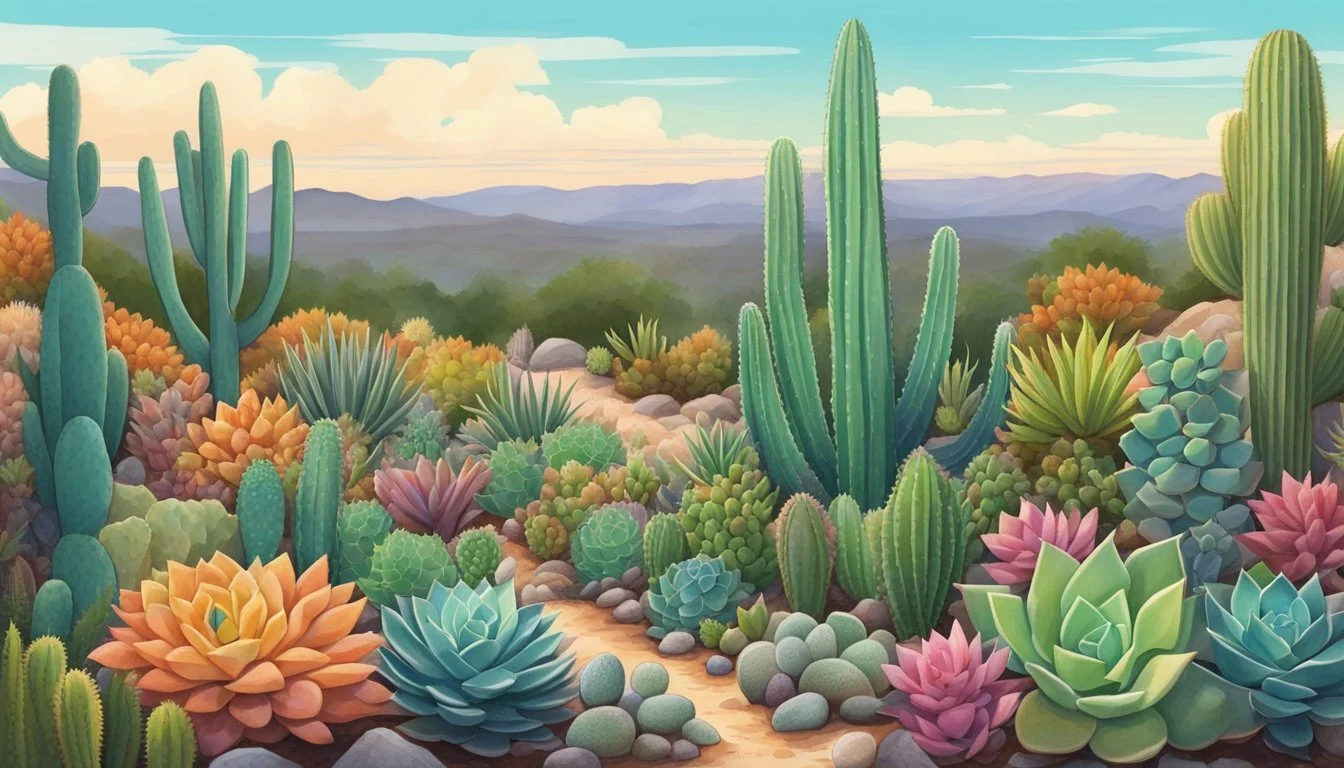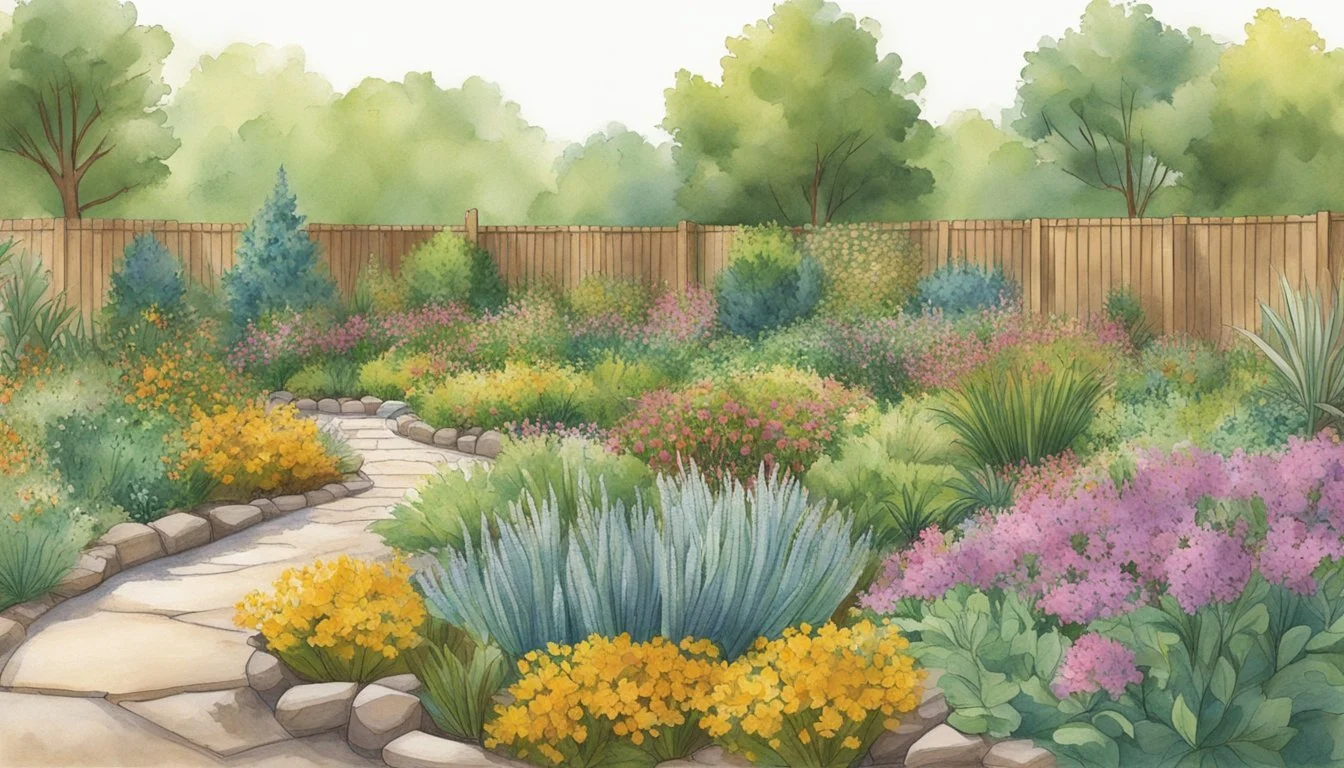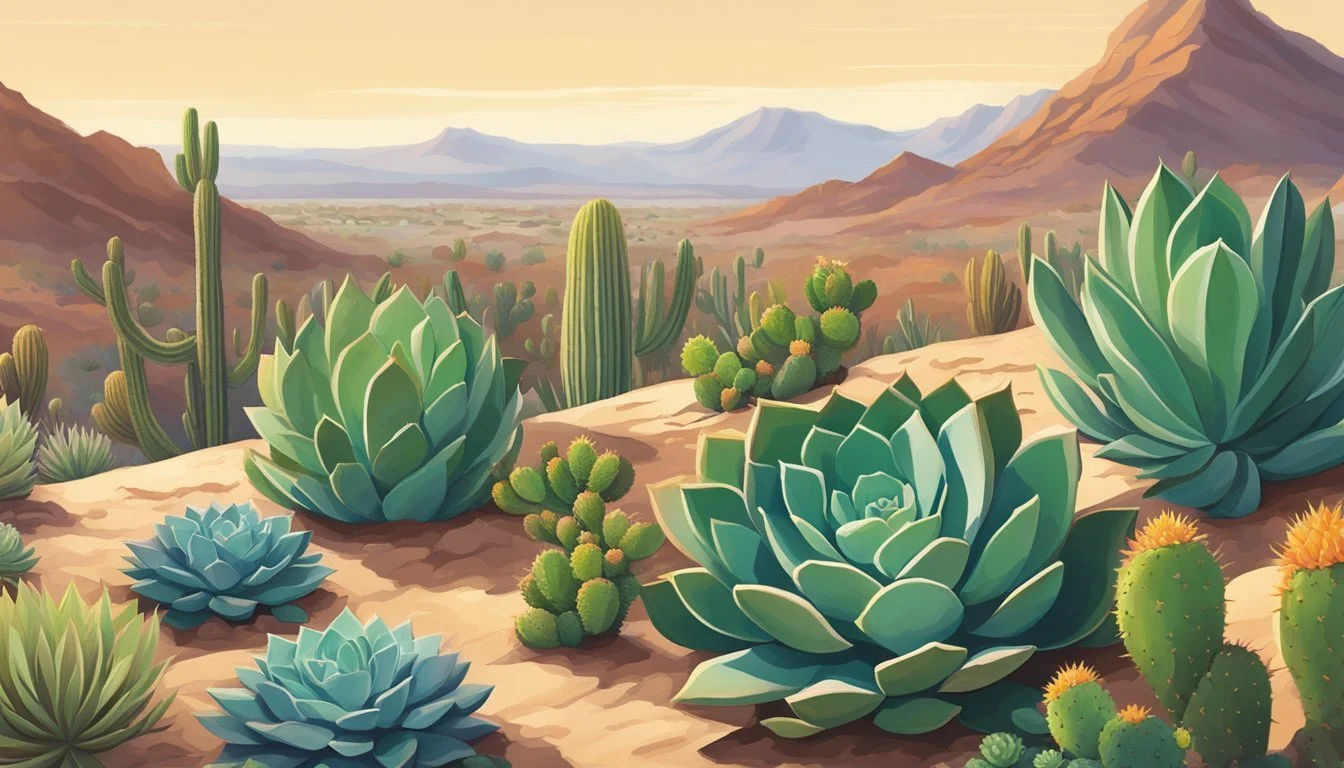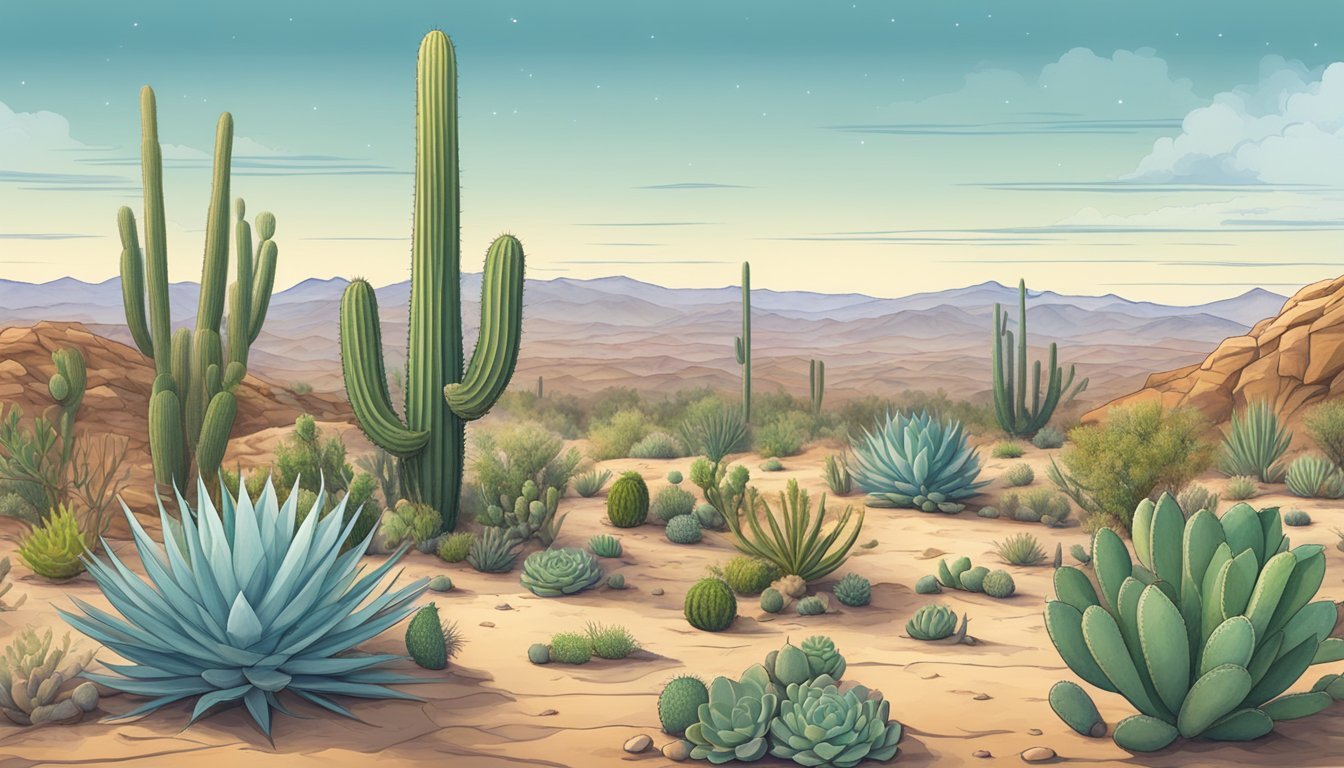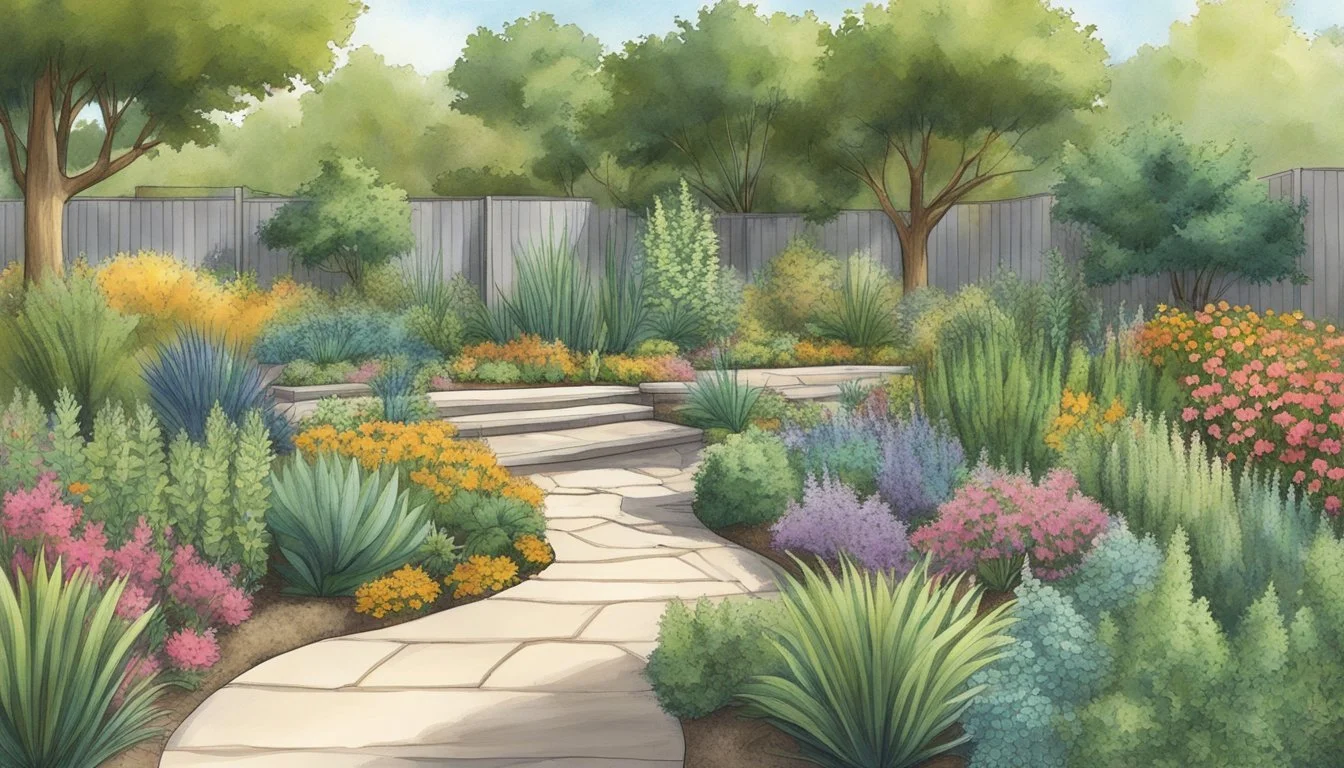Drought-Tolerant Plants in Arkansas
A Guide to Resilient Gardening
Gardening in Arkansas presents unique challenges due to the region's variable climate, particularly during the hot and dry summer months. To cultivate a resilient and water-efficient landscape, many gardeners and homeowners are turning to drought-tolerant plants. These species have adaptations that enable them to thrive with minimal irrigation, making them suitable for Arkansas's sporadic rainfall patterns. By incorporating these plants into their gardens, individuals not only conserve water but also ensure their outdoor spaces remain vibrant and ecologically sound throughout the year.
Selections from the array of drought-tolerant plants for Arkansas include native perennials, shrubs, and ornamental grasses. Examples such as the Arkansas beardtongue and the purple coneflower offer not only drought resistance but also add aesthetic appeal with their colorful blooms. Additionally, these plants can contribute to local biodiversity by providing habitat and food sources for pollinators. Understanding the characteristics of these drought-tolerant species can help gardeners make informed choices that lead to successful and sustainable landscaping practices.
Understanding Drought Tolerance
Drought tolerance in plants refers to their ability to withstand dry weather conditions. It is an essential trait for survival in regions like Arkansas, where the summers can impose extended periods without sufficient rainfall. These plants have developed various physiological strategies to adapt and thrive under water scarcity.
One common adaptation is a deep root system that allows plants to access water from deeper soil layers. Another is the reduction of leaf area, limiting transpiration and therefore conserving water. Some plants produce higher concentrations of organic matter in their tissues, such as osmolytes, which help in maintaining cell turgidity during dry spells.
Certain species possess a waxy or hairy leaf surface that reflects sunlight and reduces water loss. This attribute is notably present in many drought-tolerant plants suitable for Arkansas landscapes, which become key choices for gardeners and landscapers in the region.
Arkansas's landscapes can consist of poor soil conditions that challenge plant growth. Drought-tolerant species are particularly valuable as they can not only survive in such soils but sometimes even improve them by adding organic matter through leaf litter and root decay.
Below is a non-exhaustive list of adaptations found in drought-tolerant plants:
Root adaptations:
Deep taproots
Extensive lateral roots
Leaf adaptations:
Reduced size
Thick, waxy cuticles
Hairy surfaces
Physiological adaptations:
Efficient water storage
Osmotic adjustment
Reproductive adaptations:
Timing flowering to favorable conditions
Seed dormancy
Understanding these mechanisms provides insight into how drought-tolerant plants effectively manage water stress, offering valuable knowledge for selecting species that can endure harsh conditions while contributing positively to the local ecosystem.
Essential Characteristics of Drought-Tolerant Plants
Drought-tolerant plants possess unique features that enable them to thrive in dry climates with minimal water inputs, making them low maintenance options for Arkansas landscapes. Their adaptations, soil requirements, and light needs are critical for their survival in challenging conditions.
Adaptations for Water Conservation
Drought-tolerant plants have developed adaptations that mitigate water loss and promote water retention. Deep root systems allow them to access moisture from deeper soil levels, while reduced leaf surfaces minimize transpiration. Some species exhibit waxy or hairy leaves that reduce evaporation by reflecting sunlight and trapping moisture. Furthermore, drought-tolerant species may undergo dormancy during extended dry periods, conserving energy and reducing their overall water need.
Soil Preferences and Improvements
These plants typically favor well-draining soil that prevents water from accumulating around the roots, reducing the risk of rot. Incorporating organic matter can enhance soil structure and water retention ability, providing a balance between drainage and moisture conservation. The use of mulch can further improve moisture retention, suppress weeds, and regulate soil temperature, creating an optimal environment for drought-tolerant plants to flourish.
Recommended Soil Amendments:
Organic compost
Coarse sand for drainage
Mulch layer on top
Sunlight and Shade Requirements
Most drought-tolerant plants are well-suited to environments with abundant sunlight, requiring several hours of direct exposure each day. However, there are varieties that can tolerate or even prefer partial shade, especially during the hottest part of the day. Understanding the specific sunlight needs of each plant is vital, as it influences their water consumption and overall health.
Lighting Conditions for Common Drought-Tolerant Plants:
Full Sun: 6+ hours of direct sunlight
Partial Shade: 3-6 hours of direct sunlight, preferably morning sun
Shade: Less than 3 hours of direct sunlight, with filtered light during the day
Popular Drought-Tolerant Plants in Arkansas
In Arkansas's variable climate, gardeners often seek plants that thrive with minimal water. Exceptional drought-tolerant species offer resilience and beauty to landscapes across the state.
Perennial Favorites
Arkansas gardeners often favor perennials for their long-term presence and reduced maintenance. Among these, the Purple Coneflower stands out for its ability to withstand dry spells while attracting pollinators with its striking blooms. Black-eyed Susans (Rudbeckia) offer bright, sun-yellow petals that are reminiscent of sunny days and prove to be resilient in arid conditions. As for Salvia, its variety of colors and tolerance to drought make it a stalwart choice in any Arkansas perennial bed.
Shrubs and Trees
When considering shrubs and trees, the Eastern Redbud is a popular deciduous option famed for its spring blossoms and hardiness. Drought tolerance makes it especially suitable for Arkansas landscapes that face the summer heat. Additionally, there are drought-tolerant shrubs like certain azaleas that, once established, provide a lush display with minimal watering requirements.
Colorful Annuals and Biennials
For color that lasts a single season or returns each year, gardeners in Arkansas have a variety of annuals and biennials at their disposal. These plants can brighten up any garden without the need for frequent watering. When planting for color and drought-resilience, look for specific varieties known for their adaptability to drier climates.
Creating a Drought-Tolerant Garden
Drought-tolerant landscapes are essential in Arkansas, where dry summers can pose a challenge to traditional gardening. Implementing the right design, selecting appropriate plant species, and providing proper care and maintenance can result in a thriving garden with minimal water requirements.
Design and Layout
When designing a drought-tolerant garden, one should aim for a layout that reduces water evaporation and supports water retention. Mixed borders or meadows can be integrated to create an Arkansas landscape that is both beautiful and sustainable. Tiered plantings and the inclusion of hardscapes such as rocks can help manage soil moisture and reduce the need for irrigation.
Choosing the Right Plant Species
Selecting the right plant species is crucial for a low-maintenance garden that withstands Arkansas's hot climate. Gardeners should opt for native plants or those adapted to arid conditions. For example, species like lavender (Lavandula angustifolia) and Russian sage (Perovskia atriplicifolia) are well-suited for these environments. These plants typically require less water and are resistant to local pests and diseases.
Garden Care and Maintenance
Regular maintenance is key for a thriving drought-tolerant garden. Mulching helps conserve water, prevent weeds, and protect plant roots. However, it's important to avoid over-mulching which can lead to root rot. Efficient watering systems, such as drip irrigation, direct water to the plant roots, minimizing waste. Additionally, gardeners should be aware of the signs of stress in plants to adjust care accordingly and ensure the longevity of their Arkansas landscape.
Native Arkansas Plants for Sustainability
In Arkansas, the integration of native plants into landscaping is essential for sustainability. These plants are well-adapted to the local climate and soil conditions, making them more resilient during droughts. The Arkansas Native Plant Society emphasizes the importance of native species for ecosystem health. They facilitate habitats for local wildlife and require less maintenance, thus conserving water and reducing the need for chemical fertilizers and pesticides.
Advantages of Planting Native:
Resilience to Local Climate: Adapted over generations to thrive in Arkansas's weather conditions.
Supports Local Ecosystems: Provides food and habitat for native wildlife.
Reduces Maintenance: Native plants generally require less watering and care than non-native species.
Here are some native Arkansas plants recommended for sustainable landscapes:
Scientific Name
Callicarpa americana
Echinacea pallida
Penstemon arkansanus
Characteristics
Produces vivid purple berries and can thrive in dry conditions.
Attracts pollinators and is known for its medicinal properties.
Offers striking flowers and is highly drought-resistant.
For a more comprehensive guide on drought-tolerant native species, resources such as the University of Arkansas' Cooperative Extension Office are invaluable. Incorporating plants like the ones listed above not only contributes to the aesthetic value of gardens but also promotes a sustainable approach to gardening in the Arkansas region. It is encouraged to plant native for a thriving and environmentally conscious landscape.
Supporting Wildlife with Drought-Tolerant Plants
In Arkansas, integrating drought-tolerant plants into landscaping can sustain local wildlife by providing essential resources. These plants not only conserve water but also play a pivotal role in supporting ecosystems through attracting various pollinators and offering suitable habitats.
Attracting Pollinators
Drought-tolerant plants such as Echinacea purpurea (Purple Coneflower) and Asclepias tuberosa (Butterfly Weed) are magnets for bees and butterflies. By establishing a pollinator garden with these species, one creates a crucial food source for these pollinators. Native species like the Ozark Blue Star and Wild Bergamot are also highly effective at attracting hummingbirds. A garden comprised of these plants ensures a steady presence of these vital pollinators, even during periods of low rainfall.
Plants Attracting Bees:
Purple Coneflower
Wild Bergamot
Plants Attracting Butterflies:
Butterfly Weed
Joe-Pye Weed
Plants Attracting Hummingbirds:
Ozark Blue Star
Red Yucca
Providing Habitats
Creating a diverse landscape with drought-resistant flora such as Schizachyrium scoparium (Little Bluestem) can offer excellent habitats for wildlife. These plants provide not only shelter but also nesting materials for birds and insects. Groundcovers, like Verbena canadensis (Rose Verbena), serve as protective spaces for many small ground-dwelling species. Utilizing these native plants ensures that wildlife can flourish in gardens without the need for frequent watering.
Habitat Plants for Birds and Insects:
Little Bluestem: Nesting material
Rose Verbena: Ground cover and shelter
By incorporating these drought-tolerant plants into their gardens, Arkansans can significantly contribute to the welfare of local wildlife, fostering a resilient and dynamic ecosphere.
Color Schemes in Drought-Tolerant Landscaping
In drought-tolerant landscaping, it's important to select a color palette that not only conserves water but also complements the natural beauty of Arkansas's surroundings. Through strategic plant choices, gardeners can create visually appealing landscapes that are both resilient and vibrant.
Warm and Vibrant Tones
For a garden that exudes warmth and energy, incorporating plants with orange, red, gold, and yellow blooms is key. These colors can create an inviting atmosphere and are often found in drought-resistant species.
Orange:
Butterfly weed (Asclepias tuberosa)
Hummingbird mint (Agastache spp.)
Red:
Autumn sage (Salvia greggii)
Red yucca (Hesperaloe parviflora)
Gold & Yellow:
Black-eyed Susan (Rudbeckia hirta)
Goldenrod (Solidago spp.)
The use of these warm-hued plants can lead to Gorgeous Drought-Tolerant Garden Plans and Ideas which can withstand dry summers and require minimal supplemental watering.
Cool and Soothing Hues
For a calming and serene effect, drought-tolerant gardens may feature shades of blue, green, white, and purple blooms. These colors contribute to a refreshing landscape design that's pleasing to the eye even under the Arkansas sun.
Blue:
Blue false indigo (Baptisia australis)
Russian sage (Perovskia atriplicifolia)
Green:
Sedum (Sedum spp.)
Ice plant (Delosperma spp.)
White:
White gaura (Gaura lindheimeri)
Yarrow (Achillea millefolium)
Purple:
Lavender (Lavandula spp.)
Purple coneflower (Echinacea purpurea)
These hues have excellent drought tolerance, which includes many plants that feature grey or silver foliage, often indicative of their water conservation capabilities.
Herbs and Edibles That Thrive in Dry Conditions
In Arkansas's often dry climate, certain herbs and edible plants exhibit remarkable resilience. These species have adapted to thrive in conditions where water can be scarce.
Culinary Herbs
Culinary herbs are a staple for home cooking and can flourish even in challenging environments. Rosemary and Thyme are two such herbs that not only tolerate arid conditions but often prefer them, developing more concentrated flavors.
Rosemary is well-suited for dry gardens and requires well-draining soil. Its ability to resist drought makes it a hardy addition to any culinary garden.
Thyme has a robust nature and can flourish under full sun, coping well with drought. Various thyme varieties offer both culinary versatility and decorative appeal with their purple blooms.
Oregano (Origanum vulgare), with its drought tolerance abilities, is indispensable in many kitchens. Thriving in full sun and well-drained soil, it's a mainstay in Italian and Mediterranean dishes.
Fruit-Bearing Plants
Fruit-bearing plants can vary in their water needs, but some are surprisingly adept at withstanding dryer conditions.
Gardenia plants, while not fruit-bearing, are often desired for their fragrant and lush flowers. They are somewhat more drought tolerant compared to other flowering shrubs, though they do require well-draining soil and benefit from mulching.
While gardenias are known for their beautiful flowers and aroma, it's important to note that they differ from typical fruit-bearing plants in their care and environmental needs. When selecting drought-tolerant edibles, it's vital to consider both the soil quality and the typical climate of the region to ensure a thriving garden.
Protecting Your Plants from Extreme Conditions
In Arkansas's often dry climate, gardeners can take strategic steps to safeguard their plants against the rigors of drought. Utilizing materials such as mulch is imperative for moisture retention and temperature regulation in the soil. An effective mulch layer acts as a barrier, reducing water evaporation from the soil surface and maintaining cooler root environments during hot spells.
Water Wisely
Morning Watering: By watering in the early morning, they capitalize on cooler temperatures and reduced wind, minimizing evaporation.
Infrequent, Deep Watering: Encourages deeper root growth, thus making plants more resilient in dry periods.
Mulching
Organic Mulch: Materials like bark or straw can be spread around plants to protect roots and conserve water.
Mulch Depth: A layer of 2–4 inches is ideal to effectively moderate soil temperature and retain moisture.
Plant Choices
Selecting plants accustomed to a dry climate is another robust defensive strategy against drought. Native species are particularly well-suited because they are naturally adapted to local environmental conditions.
Native Perennials: Low-water requiring plants such as stonecrop and catmint can thrive in challenging conditions and can be found on lists of drought-tolerant plants suitable for Arkansas landscapes.
Gardening Techniques
Xeriscaping: This landscaping method relies on water-efficient gardening practices, including the selection of drought-resistant plants and the reduction of water-intensive turf areas.
By incorporating these methods, gardeners can ensure their green spaces remain vibrant and resilient, even when faced with the challenges of a dry climate.
Frequently Asked Questions
Selecting the right plants for a garden can be especially challenging in areas prone to drought. This section aims to answer common queries regarding the best drought-tolerant flora for Arkansas's diverse climate and soil conditions.
What are some low maintenance plants that can withstand drought in Arkansas?
For gardeners seeking low maintenance yet resilient plants, options like yucca, sedum, and lamb's ear are ideal for Arkansas gardens. These plants require minimal care and can endure dry spells effectively.
Can you recommend drought-tolerant plants suitable for landscaping in Arkansas?
Landscapes in Arkansas can benefit greatly from the hardiness of plants like switchgrass, Arkansas bluestar, and the Ozark sundrops. These species can provide both beauty and resilience against drought for home landscapes.
Which plants thrive in full sun and are also drought-tolerant in Arkansas?
For areas receiving full sun, consider the purple coneflower, black-eyed Susan, and Russian sage, as they are all well-adapted to full sun exposure and have excellent drought tolerance.
What are the best drought-tolerant plants for container gardening in Arkansas?
Container gardens in Arkansas can flourish with drought-tolerant plants like the blanket flower, stonecrop, and portulaca. These plants can survive in limited soil conditions and are perfect for container settings.
Are there any evergreen plants that are drought-tolerant in Arkansas?
Evergreen plants like the eastern red cedar and Arkansas blue star exhibit excellent drought tolerance. Their ability to maintain foliage year-round makes them great choices for Arkansas gardens seeking constant greenery.
What plants are exceptionally good at surviving drought conditions for Arkansas gardens?
Some of the most robust plants for drought conditions in Arkansas include the butterfly milkweed, coreopsis, and the penstemon variety known as Arkansas beardtongue. These plants are adapted to thrive in harsh drought conditions, making them outstanding choices for Arkansas gardens.

